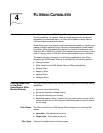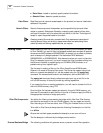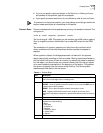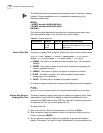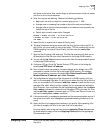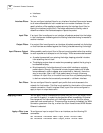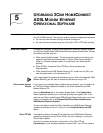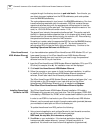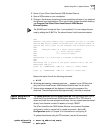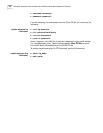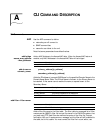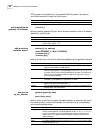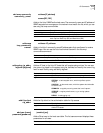
4-8 CHAPTER 4: FILTERING CAPABILITIES
If the syntax is invalid, the filter is still added to the managed list with a status of
verify failed. To correct filter file errors, you must make the changes to the original
filter file using a text editor, and re-TFTP the file to the bridge’s FLASH memory.
Then use the verify filter command to check the filter file syntax.
■ To add a filter file to the list of managed filters, use the CLI command
add filter <filter name>
It may be helpful to use the list files command to see files successfully stored in
the FLASH memory.
Removing a Filter from
an Interface
■ To remove a filter that is assigned to an interface, use the following command:
set interface <interface name> input_filter ""
set interface <interface name> output_filter ""
The " " value represents a null value and removes the defined filter from the
interface. For example, to remove an output filter from an interface named eth:1,
you would use the following command: set interface eth:1 output_filter ""
Removing a Filter from a
Port Profile
■ To remove a filter that is assigned to a port profile, use the following
command:
set port <port number> input_filter ""
set port <port number> output_filter ""
The " " value represents a null value and removes the defined filter from the user
profile.
■ For example, to remove an input filter from port #2, you would use the CLI
command:
set port 2 input_filter ""
Deleting a Packet Filter ■ To delete a specific packet filter, removing the filter file permanently from the
FLASH memory, use the CLI command
delete filter <filter_name>
Verifying Filter File
Syntax
The verify filter command must be used if you make changes to a filter file that has
already been added to the managed list and re-TFTP it back to the bridge’s FLASH
memory (using the same filename). The verify filter file will check the filter syntax.
If the syntax is valid, no message is generated and the command prompt returns. If
the syntax is not valid, error messages are generated detailing the source of the
errors.
■ To verify a filter file, use the CLI command
verify filter <filter_name>
Showing Filter File
Contents
■ To view the contents of an entire filter file that has been added to the
managed list of filters, use this command:
show filter <filter_name>




